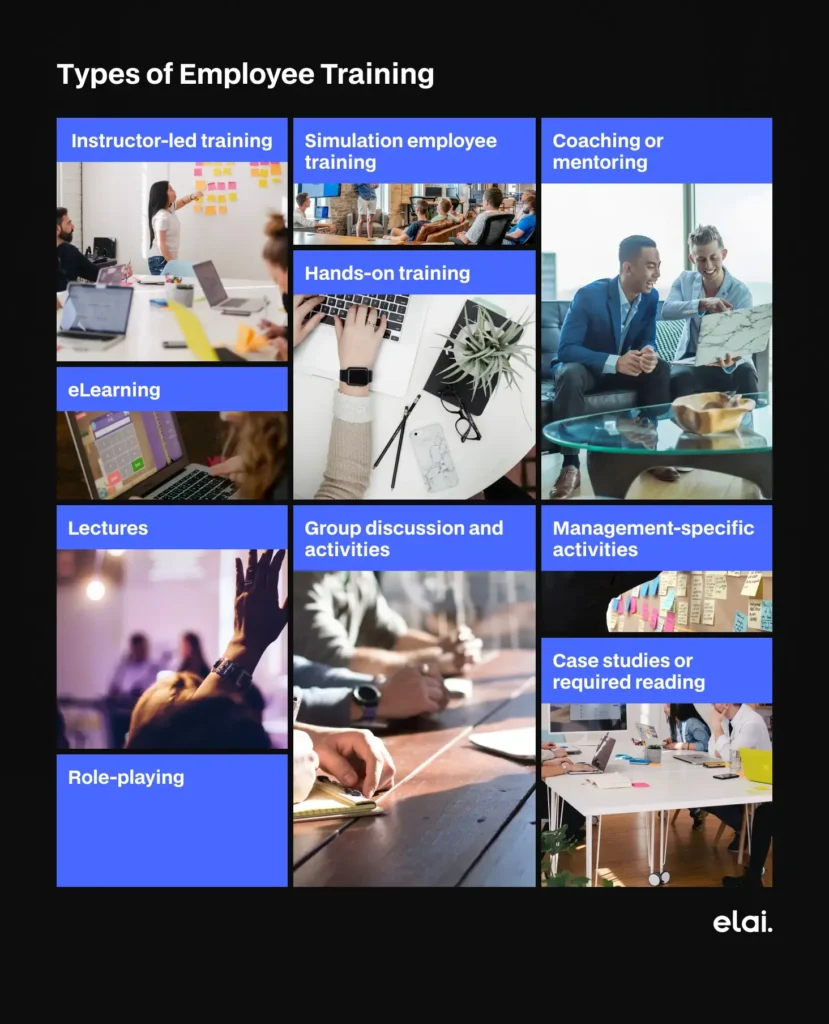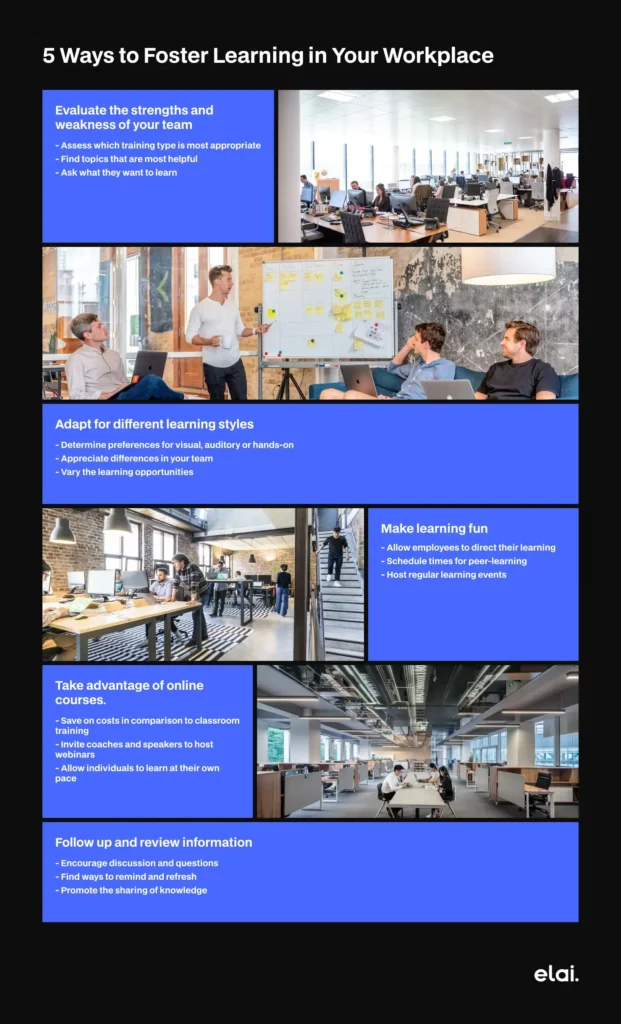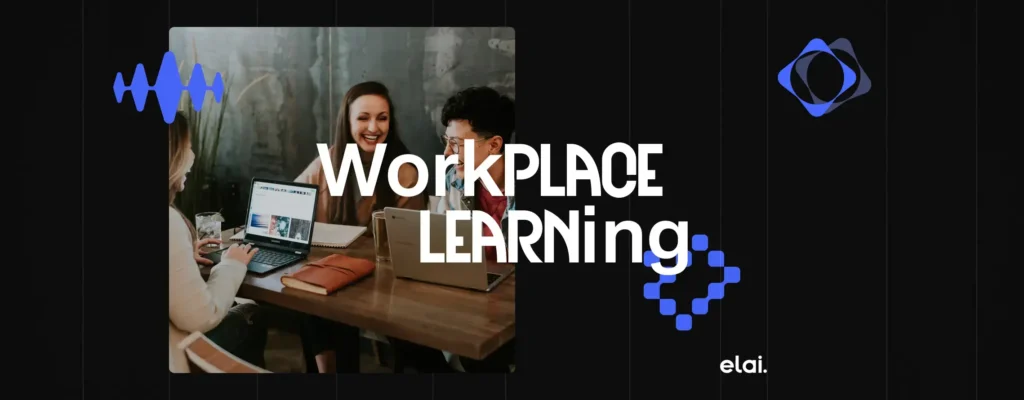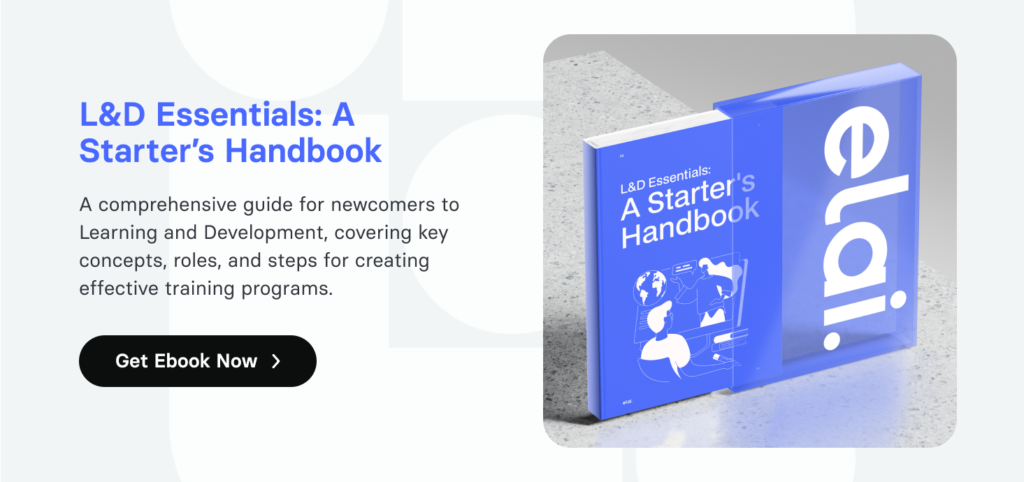One of the most important ideas in professional development and organizational expansion today is workplace learning. The days of learning being limited to an office’s four walls or a textbook’s pages are long gone. The modern workplace has evolved into a dynamic learning environment where daily activities and interactions promote creativity while honing skills and exchanging information.
The concept of workplace training is a change toward a continuous, more integrated approach to growth that dissolves the boundaries between work and learning. It’s about making the most of the numerous opportunities, challenges, and experiences that present themselves throughout regular company operations to support continued personal and professional development. This concept enhances a person’s professional path while strengthening the organization’s workforce skills.
We’ll examine workplace learning’s subtleties, how it varies from conventional educational models, its advantages for employers and employees, and the tactics businesses may use to create an opportunity for growth and learning. Come along on this exploratory trip with us as we explore the true meaning of workplace education and how it can be used to drive previously unheard-of levels of creativity and growth in contemporary business.
The importance of workplace learning
Companies that cultivate a culture of continual learning styles in the workplace provide their staff members with the skills they need to accept new technology, reinvent procedures, and negotiate the complexity of the industries they serve. By continuing to invest in development, companies may maintain their agility, competitiveness, and alignment with changing customer expectations and industry norms.
Furthermore, continuous learning in the workplace goes beyond the conventional understanding of professional growth by strongly emphasizing gaining soft skills like effective communication, problem-solving, and critical thinking. These abilities may greatly improve teamwork, leadership, and overall organizational performance, and they are becoming increasingly crucial in a varied and connected corporate world. A workforce that is more engaged, motivated, and resilient may be developed by businesses by incorporating learning opportunities into their regular workflow. Workers are more likely to be dedicated to their company’s objectives, inspire innovation, and support a great workplace culture if they feel appreciated and have opportunities for professional development. Workplace learning, therefore, promotes a vibrant, integrated community that is better prepared to face future difficulties and help individuals further their careers.
Workplace Learning Types
Structured workplace learning may take many forms, each suited to a particular work function, learning style, and organizational goals. Below is a summary of the most prevalent types:
- On-the-Job Training: This type of training lets workers learn by doing by providing them with practical experience in their actual workplace. This approach works very well for learning practical skills.
- Mentorship Programs: Assisting, supporting, and exchanging information between less experienced staff members and more seasoned pros. Mentoring develops leadership abilities and promotes both professional and personal growth. Mentoring by using mentorship software develops leadership abilities and promotes both professional and personal growth.
- Workshops for Professional Development: Organized classes concentrating on certain information or skill sets. These courses can focus on developing soft skills as well as improving technical skills.
- E-learning platforms: virtual classes and modules offering adaptable learning experiences. E-learning, which can cover a variety of subjects related to an employee’s position and career goals, supports the self-paced study.
- Team-based initiatives: The initiatives that promote learning through cooperation are known as collaborative projects. These programs foster communication, problem-solving, and project management abilities.
- Job rotation and shadowing: These initiatives let staff members work in many departments or watch experts in various capacities. This exposure develops a wide range of skills and deepens awareness of the organization.
These forms of workplace learning are essential to creating a comprehensive, ongoing learning environment that promotes employee growth and organizational success.

Challenges in workplace learning and development
There are obstacles involved in putting an efficient corporate learning program into place. A notable obstacle is striking a balance between learning efforts and the responsibilities of everyday employment. Workers frequently struggle to find time between their demanding work obligations and training and development initiatives. Due to time constraints, learning opportunities may be overlooked and treated more like an afterthought than an essential component of the workday. As a result, organizations need to plan how to incorporate learning into their workflow in a way that enhances rather than undermines operational requirements.
Customizing learning experiences to fit the different demands of a diverse workforce is another problem. Employees’ diverse backgrounds, learning preferences, and professional goals make it difficult to create programs that are both successful and entertaining for everyone. The creation and upkeep of learning materials are further complicated because information must be updated often to stay current, given the speed at which technology is developing. To meet these difficulties, organizations must commit to developing flexible, adaptable learning environments that place a high value on each employee’s personal development in the context of changing organizational demands.
Trends and tendencies
The workplace learning environment is always changing due to shifting company priorities, workforce demographics, and technology improvements. Here are a few of the most noteworthy developments:
- Microlearning: Learning may be made more accessible and controllable with the help of microlearning—bite-sized learning modules that are quick to complete and fit into hectic schedules.
- Gamification. It is the process of enhancing learning processes by adding elements of games, which boost motivation, engagement, and information retention.
- Personalized Learning Paths: These involve adjusting learning experiences to each learner’s requirements, preferences, and performance level using AI and data analytics.
- Social Learning: Promoting a culture of ongoing, group learning within the organization by enticing information exchange and collaboration through social networks and platforms.
- Mobile learning: Using tablets and smartphones to offer learning opportunities is available anytime, anywhere, and promotes a more adaptable learning environment.
- Emphasis on Soft Skills: As soft skills become more important for success in the workplace, there is a growing emphasis on cultivating them. Examples of these talents include emotional intelligence, adaptability, and critical thinking.
The aforementioned tendencies signify a wider movement towards learning experiences that are more dynamic, interactive, and tailored to the specific needs of a varied, modern workforce. Businesses that adopt these trends will be in a better position to produce a workforce that is knowledgeable, talented, flexible, and prepared to take on new challenges.

The creation, personalization, and distribution of educational information is undergoing a radical change due to the incorporation of generative AI into workplace learning. Platforms such as Elai.io are examples of this technology’s capacity to provide personalized learning materials in real-time, adjusting to every worker’s individual requirements and learning style. Generative AI has the ability to assess a student’s learning trajectory, pinpoint areas of strength and weakness, and modify the curriculum as necessary. Because the material is specifically related to the learner’s interests and professional development, this level of personalization guarantees that learning is not only more effective but also fascinating. Additionally, generative AI can produce a variety of learning formats, such as interactive simulations, videos, and text and image files, which will appeal to a wider range of learning styles and make learning more dynamic.
Furthermore, generative AI facilitates the scalability of workplace learning programs. Businesses can quickly generate high-quality, customized learning content with platforms like Elai.io that would have otherwise taken a lot of time and money to create by hand. Organizations are able to stay up with the swift changes in industry knowledge and technology due to this efficiency.
Furthermore, generative AI creates opportunities for more complex feedback and assessment systems that give students instantaneous, practical insights into their development and areas for growth. The potential for generative AI to completely transform workplace learning is enormous as it develops, providing a way to build workforces that are more informed, flexible, and talented that can successfully navigate the challenges of today’s complicated corporate environment.
The Future of Workplace Education
It’s evident that the trends and technology reshaping today’s learning settings are opening the door for a more flexible, engaging, and individualized approach to professional development as we look to the future of workplace learning. The emergence of generative AI and other cutting-edge technologies signals a paradigm shift in the way that skills are developed and knowledge is taught in the workplace. These developments promise to improve accessibility, flexibility, and alignment of learning with company and individual career goals. Because of this, the future workplace will probably have a continuous learning culture where opportunities for professional growth are woven into the daily grind.
Furthermore, a future where different learning styles are about developing a well-rounded, agile workforce capable of critical thinking and collaboration rather than just acquiring technical knowledge is suggested by the tools like generative AI. In addition to advancing individual careers, this all-encompassing approach to education will boost organizational creativity, adaptability, and competitiveness. Businesses’ task going forward will be to stay ahead of these trends and keep improving their learning processes in order to use their human capital fully. Workplace learning has a bright future ahead of it and has the potential to change the nature of work in ways we can only begin to envisage.
FAQ
What is the meaning of workplace learning?
The process of gaining information and abilities through experiences and instructional activities in a professional setting is referred to as “workplace learning”.
Why is continuous learning important in the workplace?
In order to be competitive in their business, adapt to changes, and innovate, people need to engage in continuous learning at work.
How to create a learning culture in the workplace?
Organisations should promote inquiry, offer learning materials, acknowledge accomplishments, and incorporate learning into routine duties in order to foster a learning culture in the workplace.
How to accommodate different learning styles in the workplace?
Offering a variety of training options, including as workshops, online courses, mentorship programs, and hands-on projects, to meet varying requirements and preferences can help accommodate varied learning styles in the workplace.

